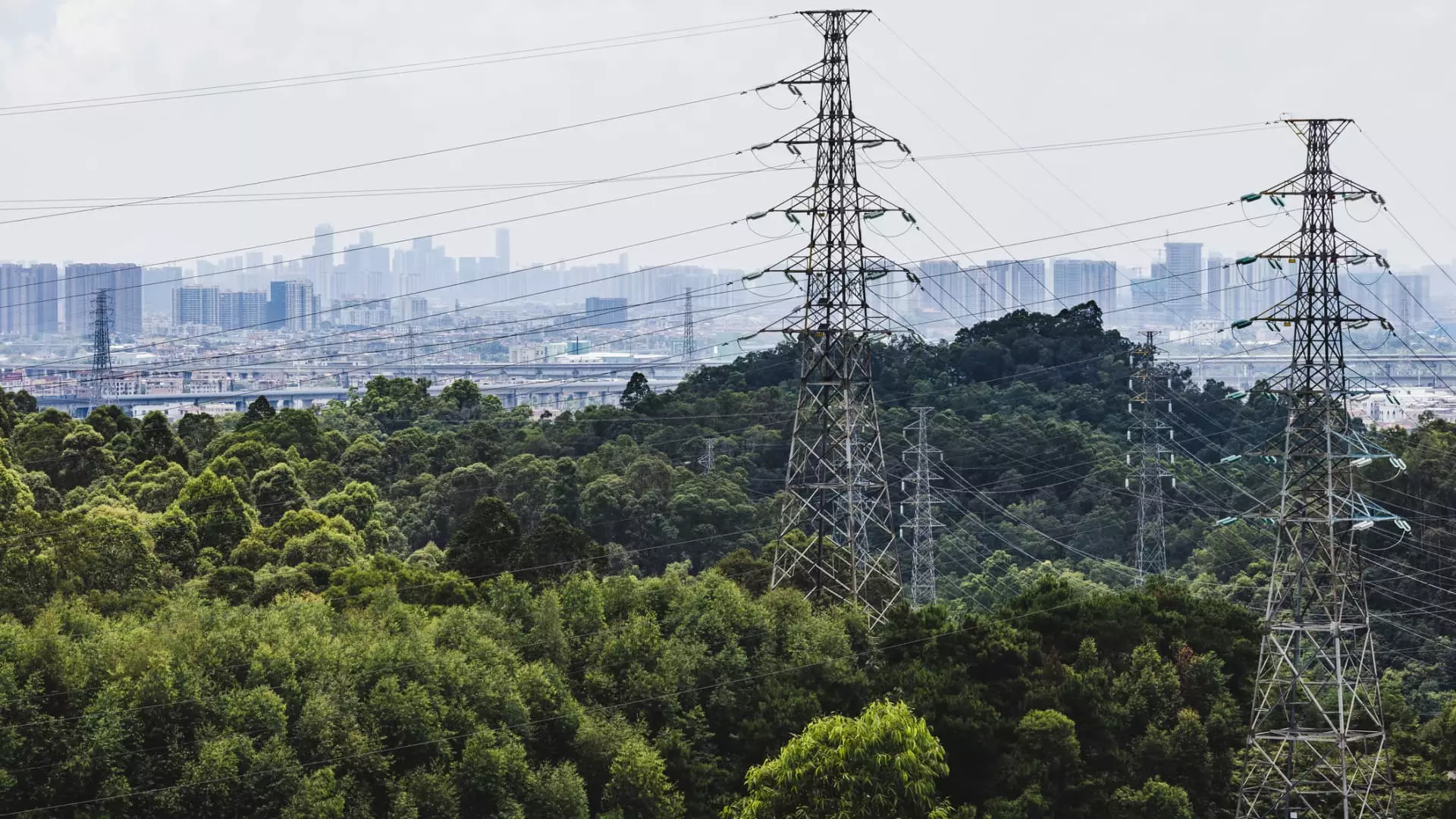In the seemingly uncomplicated world of energy, one would expect prices to reflect a straightforward relationship between supply and demand. However, the current landscape in the United States tells a more vexing tale. With household electricity prices soaring by 4.5% in the past year alone, a trend that outstrips the overall inflation rate, there’s a palpable tension brewing in American homes. The U.S. Energy Information Administration predicts that these rising prices are not an ephemeral spike but a trajectory that will continue for the foreseeable future, potentially outpacing inflation through at least 2026. At the heart of this crisis lies a fundamental misalignment between increasing demand for electricity and the sluggish pace of new generation capabilities coming online.
According to David Hill, executive vice president of energy at the Bipartisan Policy Center, this disparity is rooted in broader market dynamics. As aging power-generating facilities are decommissioned, not enough new sources of energy are being added to the grid to compensate for their loss. The system is not simply creaking under the pressure; it is on the verge of collapse in certain regions. With an average consumer spending around $1,760 annually on electricity in 2023, this crisis is far from abstract; it impacts the monthly budgets of millions of American families.
The Geographic Divide
Electricity pricing in the U.S. is an intricate tapestry of regional variances. While the average household pays about 17 cents per kilowatt-hour, this number can fluctuate drastically depending on geographic location. Families in North Dakota enjoy rates as low as 11 cents, contrasting sharply with the staggering 41 cents faced by households in Hawaii. The cost of living in important coastal states like California and regions in New England poses an additional burden, often due to existing infrastructure strains and higher demand.
As highlighted by Joe Seydl, a senior markets economist, energy costs are not just a factor of global oil prices; they are intensely local. In some Pacific regions, electricity prices are predicted to spike by an alarming 26%, exacerbating the challenges for families who are already grappling with rising costs of living. The focus on these localized dynamics is crucial if we are to understand the full impact of these surging electricity prices on national stability and family budgets.
The Dark Side of Electrification
While the narrative often champions the electrification of society—advocating for electric vehicles and smart homes—it’s essential to discern the unintended consequences these advancements bring. Increased electrification translates into higher demands on the already strained electric grid. The rapid rise of data centers exemplifies this dilemma; their energy consumption tripled over the past decade and is expected to double or even triple again in the near future, gobbling up nearly 12% of all U.S. electricity by 2028.
Such an increase is not merely a footnote; it indicates an irreversible shift in how we consume energy. The reality that our dependence on digital technology essentially siphons energy away from other critical sectors raises alarms. Experts have pointed out that the electricity consumed for data processing is set to eclipse that used in manufacturing substantial energy-intensive goods, affecting everything from steel to chemicals.
This paradox, in which the very technologies that drive innovation also contribute to skyrocketing energy costs, raises significant questions about sustainability and future public policy.
Infrastructure: The Unseen Culprit
While demand continues its relentless ascent, the nation’s aging infrastructure cannot keep pace. Analysts like Michael Cembalest have painted a dismal picture of the current state of the electrical grid—where critical transmission systems lag far behind the targets set by the Department of Energy. Long delivery times for transformer equipment and insufficient investments in maintenance and upgrades are fueling the crisis.
The statistics are sobering: half of all transformers in the U.S. are nearing the end of their functional lives, while escalating inflation affects both prices and availability of crucial components. The resulting bottleneck couldn’t come at a worse time, as households face rising electricity costs while infrastructure continues to deteriorate.
The issues here are not just about energy prices; they encapsulate broader societal challenges, reflecting how we prioritize infrastructure investment. While electrification offers a glimpse into a greener future, current realities raise serious doubts about our ability to meet such ambitious goals within existing frameworks.
It’s essential to delve deeper into these complexities rather than accept simplistic narratives about energy prices. Only through a well-rounded analysis can policymakers and citizens alike develop proactive strategies to not only address immediate crises but also secure a stable energy future.

